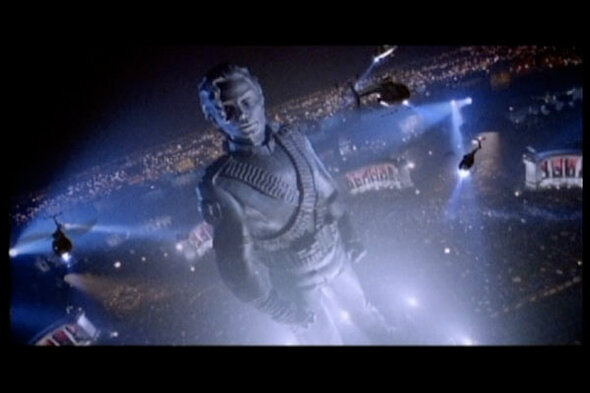Projects by Laura Parnes
-

Magic Thinking (2023-Present, In Production)
Laura’s latest project, currently in production, find’s a meditation group’s utopian aspirations colliding with our current disturbing reality, mirroring the extremism seen on the far right.
-

Tour Without End (2018-2021)
Tour Without End is an experimental fiction/doc hybrid that casts real-life musicians, artists and actors as bands on tour, and expands into a cross-generational, Trump-era commentary on contemporary culture & politics.
-

Music Videos
From music-based art videos to an official clip directed for The Julie Ruin, Laura’s work has often revolved around bands, music and music video formats.
-

County Down (2012-13)
County Down is a web-based episodic digital film that explores an epidemic of psychosis among the adults in a gated community … which coincides with a teenage girl’s invention of a designer drug.
-

Ten Ways of Doing Time (2013)
In James Fotopoulos and Laura Parnes’ “Ten Ways of Doing Time”, prison drama and science fiction motifs are fused to create an experimental narrative where scientists research on prisoners attempting to create psychotic warriors for the army.
-

Blood and Guts in Hollywood: Two Screenplays (2009)
The screenplays for Laura Parnes’ “Blood and Guts in High School” and “Hollywood Inferno” are printed alongside sketches, source materials, and beautifully garish film stills.
-

Untitled for Technically Sweet (2008)
This two-channel video installation pits catalog-perfect natural settings with the potential for environmental devastation.
-

The Only Ones Left (2006-2007)
"The Only Ones Left", featuring actor Jim Fletcher, weaves film noir and mafia genre references with CEO diatribes, while also exposing the conventions of the feature film climax. The three channels of video depict all plot points of the Hollywood film climax concurrently.
-

Blood and Guts in High School (Janie 1978-1982) (2004-2009)
"Blood and Guts in High School" features actress Stephanie Vella in a series of video installations that re-imagine punk-feminist icon Kathy Acker’s book of the same title.
-

The Real Art World (Episodes 1-4) (1998-2004)
Episodes of "The Real Art World" explore the awkward social interaction of the studio visit.
-

Hollywood Inferno (Episode 1) (2001-2003)
"Hollywood Inferno (Episode One)" takes the viewer through the alienating world of a teenager named Sandy, a modern-day Dante, who descends into consumerist Hell on the escalator at the Mall.
-

Heidi 2 (1999-2000)
Heidi 2, produced in collaboration with Sue de Beer, is a feminist revision of Mike Kelley and Paul McCarthy's 1992 video, Heidi.
-

No is Yes (1997)
“No Is Yes” examines the inevitable co-option of counter culture through two teenage girls that accidentally kill and mutilate their favorite rockstar.

Other Projects
-

Free to Be Michael Jackson (2006)
More than fifteen filmmakers were invited to rework or in their own way create short works inspired by “Free to Be You and Me”.
-

Election 2004
At The Liberty Fair to benefit Downtown for Democracy Laura offered free hypnosis to convince attendees that the Democrats could win the 2004 elections. Turns out she was wrong.
This included a series of 30-second campaign spots created for Downtown for Democracy including, "Arnold's Ass", "Vote for Bush or Burn in Hell", and "Keanu Reeves for President". -

Suburban Peace Coalition (1998)
Suburban Peace Coalition explores "end of the millennium hysteria" and the suburban desire to see the centers of sin, the metropolises of the United States, punished.
-

Jacky Shecky Bunny Lady Jaye
1969-2007. We Love You.
-
Wrong Place, Wrong Time (1998)
"Wrong Place, Wrong Time" uses appropriated images from the "reality television" genre to examine the seductiveness of the spectacle of tragedy. This video exists in an area where the division between reality and image are simultaneous. The images are of real explosions, disasters, deaths, and assaults from the nightly news, "Cops", "Real TV", tabloid television, and talk shows. At times the subjects appear illuminated through an overlapping of imagery, while the low-res distortion through creates a pixelated, almost ecstatic quality. Point-of-view shots draw the viewer into the endorphin rush. These mesmerizing images slowly reveal their tragic consequences while reminding the viewer of their own mortality.
-
Herzog on Fassbinder (2003)
An audio response to a Herzog lecture at Cinematexas in 2003. Herzog is brilliantly played by the actor Kel O'Neill.